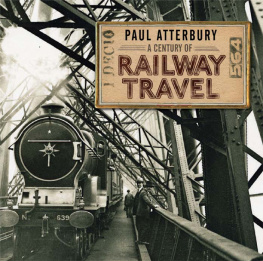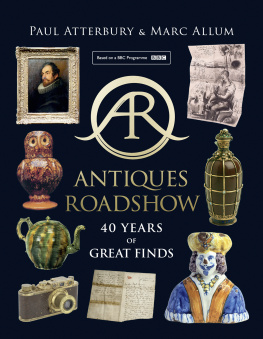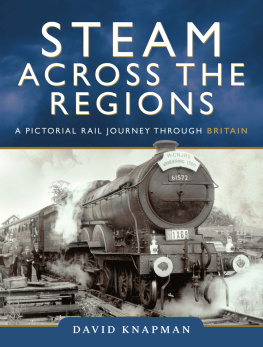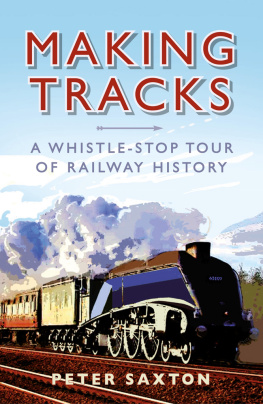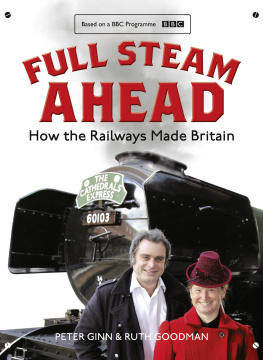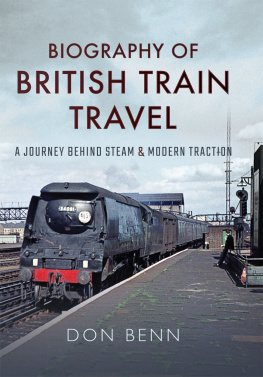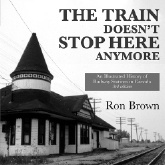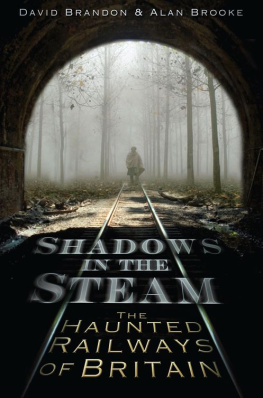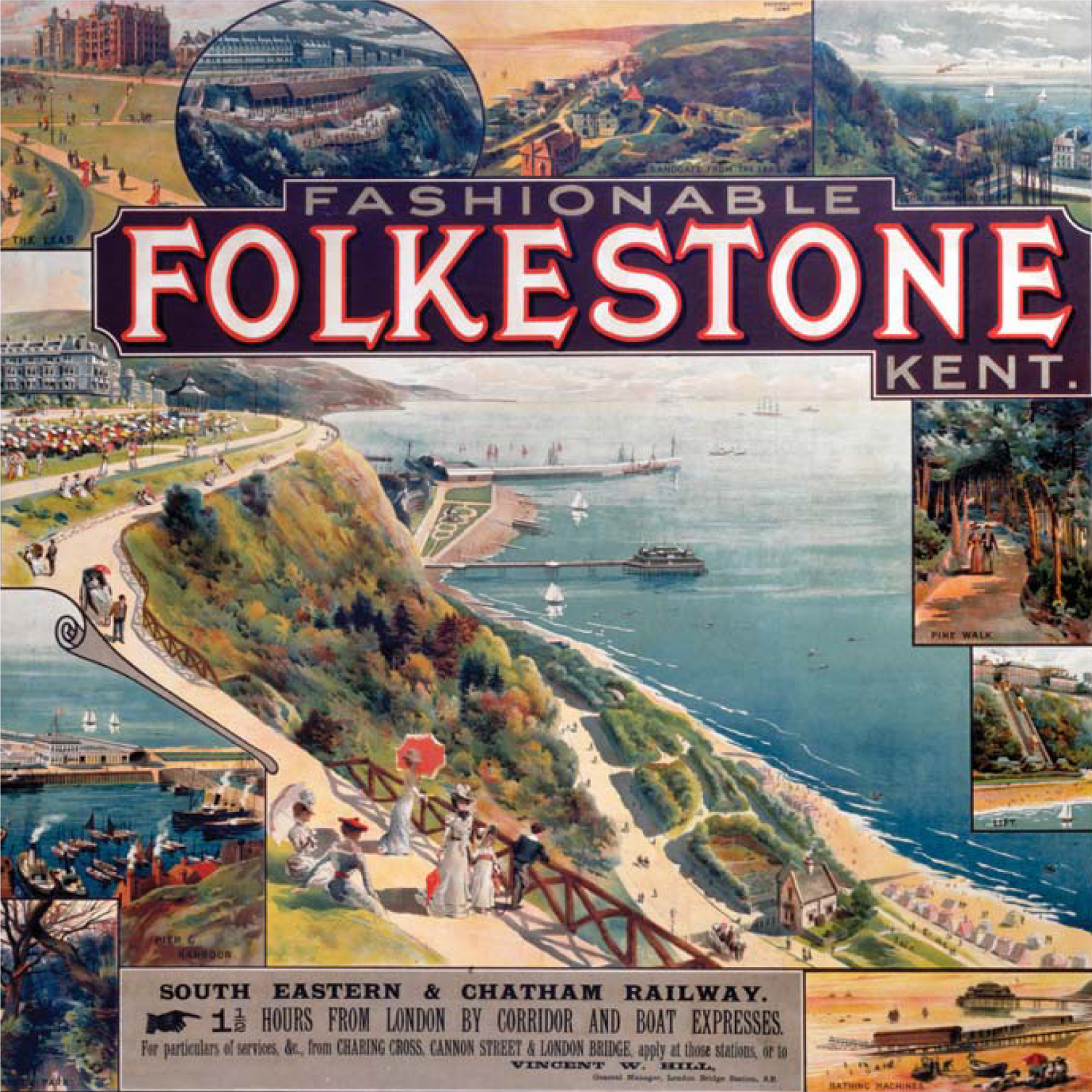A CENTURY OF
RAILWAY TRAVEL
PAUL ATTERBURY
CONTENTS
INTRODUCTION
In 1913, Britains railways were at their peak, and the envy of the world. The 20,000-mile network, created piecemeal by independent companies and private capital from the 1830s, now reached into the most remote corners of the country, linking cities, towns, villages and even hamlets. Very little remained to be added and indeed, by the 1930s, the network had actually started to decline, with the first significant closures of lines and stations taking place. However, in 1913 the railways were unchallenged as the primary passenger and freight carrier across the country; by making rail transport and travel universal and accessible they had put themselves at the heart of Britains social and economic life.
In both World Wars the railways were vital to the nations survival but the price each time was heavy, due to overuse and lack of maintenance. Recovery was by rationalisation. In the early 1920s all the independent companies were merged into four large regional groups, the SR, the GWR, the LMS and the LNER, a process encouraging modernisation and efficiency, as well as faster, more comfortable and better-promoted services. After the Second World War, the response was more drastic, with all the railways being nationalised and taken into government control. Modernisation was again the aim, but with the added challenge of the ever increasing competition from road transport that gradually drove the railways into deficit. Dr Beechings Report of 1963, which recommended the closure of half the network and two thousand stations, was an attempt to stop the losses. Since then, railways have always been subsidised by the government, a process that has continued even into the modern era of privatisation.
Railways have always attracted both enthusiasts and photographers and so the century from 1913 has been well documented. Many have photographed trains, and particularly locomotives, but others have also taken pictures of stations and station life. The railway station is, in many ways, the greatest legacy of the railway age, and photographs show its development from the Victorian era, its architectural diversity and its continuing impact on the travelling public. By 1913, the station had became a centre of social life, and the larger ones had hotels, restaurants, bars, shops, full postal and telegraph facilities, as well as public lavatories. A century on, the city station is sometimes more about shopping and entertainment than train travel. The photographs selected for this book offer an insight into all aspects of the railway century, from main lines to minor rural routes and from named trains and the age of steam to local diesel railcars. They document excursions, holidays and commuting, the impact of war, the changing role of women and the enduring passion of the trainspotter. They show city and country stations, the changing nature of railway publicity, classic locomotives and rolling stock and the colourful world of the modern railway. Above all, the focus is on the travelling public, the real heart of the railway network over the last century.
Festiniog Railway
circa 1910
This evocative photograph shows Tan-y-Bwlch station, the mid-point on the narrow gauge route from Porthmadog to Blaenau Ffestiniog. A train waits, headed by one of the railways 1860s locomotives. By 1910 the Festiniog, whose history as a slate railway goes back to 1836, was concentrating on tourist traffic and marketing itself as a Toy Railway. Photographs like this were taken for promotional purposes. When first opened, the Festiniogs slate traffic was operated by gravity, but steam was introduced in 1863, and passenger services soon followed. Always adventurous, the Festiniog pioneered articulated locomotives and bogie carriages, alerting the world to the potential of narrow gauge lines.
By the time this photograph was taken, slate traffic was in terminal decline. In addition, tourism was seasonal and unpredictable, thanks in part to the climate of North Wales, and in part to the increase in competing road traffic. By the 1920s the Festiniog, and other Welsh narrow gauge lines like it, were facing a difficult future. Closure came in 1946, but from 1955 the Festiniog was gradually reopened as a pioneering heritage railway, and in 1982 the restoration of the whole route to Blaenau Ffestiniog was completed. Today, the Festiniog, combined with the recently reopened Welsh Highland Railway, is Britains most important narrow gauge line, and Tan-y-Bwlch station is usually busier than in this historical image.
A Couple at the Window
circa 1912
This handsome couple posing in the window of a first-class compartment seem to capture the confident aura of Britains Edwardian era. They are well-dressed, relaxed and confident as they wait for the train to depart and the photographer seems to have captured a universally familiar event. In fact, the image, taken for publicity purposes, shows Walter Passmore, a famous actor and singer associated with the DOyly Carte Opera Company, and his wife, the Scottish actress Agnes Fraser. The couple are representatives of a time when trains were for most people an essential part of daily life. The world of theatre and entertainment was especially indebted to railways. Actors and performers regularly travelled the length and breadth of Britain by train. The railways also transported sets and costumes, for which special goods wagons were available, and famously carried whole circuses around the country, including the animals. A theatre company could finish their last performance on a Saturday night and by the Monday morning everything could be set up in another theatre, sometimes hundreds of miles away. The railways also catered for theatregoers, running late trains from city and town stations to the suburbs and the country. Another reflection of the place of the train in Edwardian life was the large number of books, comic songs, plays and early films that featured railway settings or scenes.

Fashionable Folkestone, South Eastern & Chatham Railway poster
circa 1912
Colourful posters appeared at the end of the Victorian period, thanks to the development of high-quality commercial colour lithographic printing. Artists and designers were drawn to this new reproductive technology, while advertisers were quick to grasp the marketing potential of the poster.
Travel quickly became a popular subject for posters, with shipping and railways leading the way. Soon, billboards at stations and on the streets were filled with colourful and alluring images aimed at encouraging people to see new places and enjoy their leisure. The market was highly competitive but it was the South Eastern & Chatham Railway that had developed Folkestone as a harbour and resort, and they published this decorative poster to promote the towns attractions. Like many posters of the Edwardian era, the design, by an anonymous artist, is colourful, complex and a bit confusing, thanks to its many diverse images and messages.
Platform Scene
1912
On a country station platform in Edwardian Britain a smartly dressed lady waits for her train while a porter goes about his business. Both are aware of the photographer but are definitely not posing. Informal photographs of this kind are rare until the 1920s, mainly because cameras were cumbersome and often required long exposure times. At this time Britains railway network was at its peak, connecting cities, towns and villages all over the country. Its place at the heart of Britains economic and social life is apparent in the photograph. The lady, judging by her clothes and her confidence, is well-off and independent. She seems to be travelling alone, something inconceivable before the revolution the coming of the railways represented. The porter, comfortable in the uniform that defines his social standing, is, with his trolley laden with milk churns, a reminder of the vital role played by the railways in the distribution of food and agricultural products around the country. In 1914 the railways carried 93 million gallons of milk to London, 96 per cent of the citys consumption. Goods wagons lie in the sidings in the background a reminder that the railways were the nations primary carrier.

